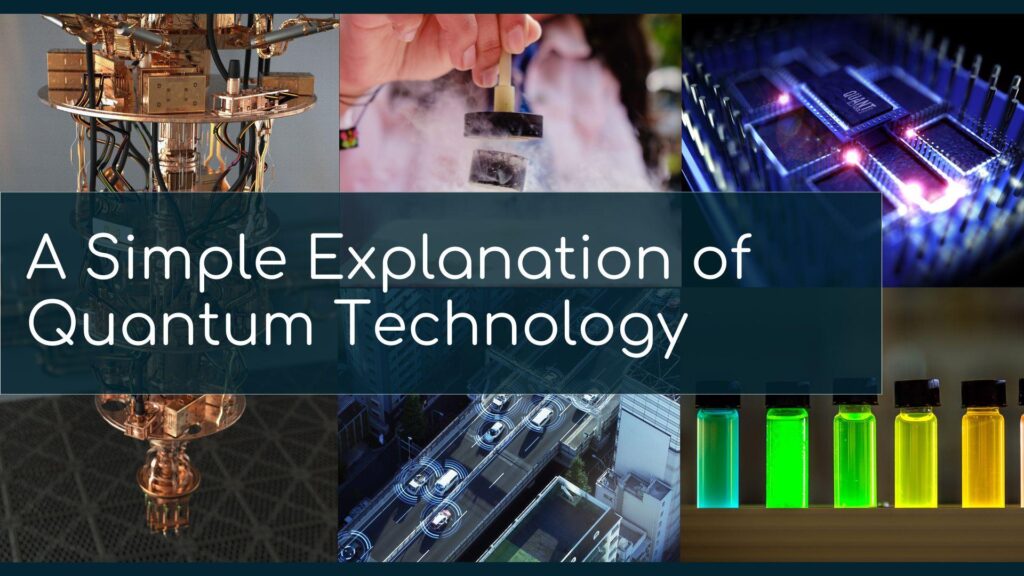A century after the dawn of quantum science, groundbreaking discoveries have transcended theoretical physics to ignite a technological revolution. From the enigmatic principles first uncovered in early 20th-century laboratories to today’s rapidly evolving quantum computers and communication systems, the journey from abstract quantum mechanics to tangible quantum technology is reshaping industries and scientific frontiers alike. This article explores the remarkable 100-year evolution charted by Phys.org, highlighting how quantum science has matured into a cornerstone of modern innovation.
The Evolution of Quantum Science Shaping Modern Technology
Over the past century, the insights born from the mysterious world of quantum mechanics have transcended theoretical physics to redefine the capabilities of modern technology. Early pioneers, grappling with fundamental questions about light and matter, unwittingly laid the groundwork for innovations that now power devices from smartphones to MRI machines. The ability to harness phenomena such as superposition and entanglement has accelerated breakthroughs in fields once deemed purely speculative, embedding quantum principles into the cornerstone of next-generation computing, secure communications, and advanced sensing.
Key milestones in this transformative journey include:
- 1927: The establishment of the uncertainty principle, setting the stage for quantum probability
- 1980s: Discovery of quantum entanglement’s potential for information processing
- 1990s: Development of quantum cryptography protocols enhancing data security
- 2019: First demonstration of quantum supremacy by Google
| Timeline | Quantum Breakthrough | Modern Application |
|---|---|---|
| 1925 | Quantum Theory Formulated | Foundation for all quantum tech |
| 1994 | Shor’s Algorithm Proposed | Quantum computing algorithms |
| 2001 | First Quantum Computer Prototype | Experimental computing devices |
| 2020 | Quantum Network Tests | Quantum internet experiments |
Breakthroughs Unlocking Practical Applications in Quantum Computing and Communication
Recent advancements in quantum technology have transformed once theoretical concepts into tangible innovations, pushing the boundaries of computation and secure communication. Researchers have developed fault-tolerant quantum processors capable of executing complex algorithms that outperform classical counterparts in specialized tasks. Breakthroughs in qubit coherence and error correction now enable sustained quantum computations, paving the way for practical applications in drug discovery, optimization problems, and cryptography. Furthermore, novel approaches to quantum networking have demonstrated the reliable transmission of quantum states over increasing distances, solidifying the foundation for a quantum internet.
These strides have been accompanied by a surge in industrial collaboration, spurring the development of commercially viable devices and protocols. Key focus areas include:
- Quantum key distribution (QKD) for unbreakable encryption
- Hybrid quantum-classical systems leveraging strengths of both paradigms
- Scalable qubit architectures that facilitate mass production
- Quantum sensors with unprecedented precision
| Breakthrough | Application | Impact Timeline |
|---|---|---|
| Topological Qubits | Enhanced error resistance | Next 5-7 years |
| Satellite-based QKD | Global secure communication | Immediate to 3 years |
| Quantum Simulators | Material science breakthroughs | 3-5 years |
Expert Recommendations for Accelerating Quantum Innovation and Industry Collaboration
Leading figures in quantum research emphasize that accelerating innovation requires a holistic approach combining robust investment, interdisciplinary partnerships, and agile policy frameworks. Key strategies include:
- Strengthening industry-academia collaborations to translate theoretical breakthroughs into scalable technologies;
- Establishing dedicated innovation hubs that foster knowledge exchange and rapid prototyping across sectors;
- Enhancing workforce development by integrating specialized quantum education into STEM curricula;
- Encouraging open data sharing to reduce duplication and accelerate discovery phases.
To illustrate practical outcomes, a recent study compared innovation velocity across different collaboration models. The table below summarizes the observed impact over a 5-year period:
| Collaboration Model | Patent Filings | Startups Founded | Time-to-Market (years) |
|---|---|---|---|
| Industry Only | 35 | 5 | 7.2 |
| Academia Only | 50 | 3 | 6.5 |
| Industry-Academia Partnership | 90 | 12 | 4.1 |
To Conclude
As we mark a century since the birth of quantum science, the journey from abstract theory to groundbreaking technology underscores the profound impact of decades of research and innovation. What once existed purely in the realm of scientific curiosity now powers cutting-edge applications in computing, communication, and materials science-heralding a new era defined by quantum technology. The path ahead remains challenging but promising, with ongoing advancements poised to reshape industries and everyday life. This milestone not only celebrates past achievements but also sets the stage for the next wave of quantum discoveries that will continue to transform our world.
